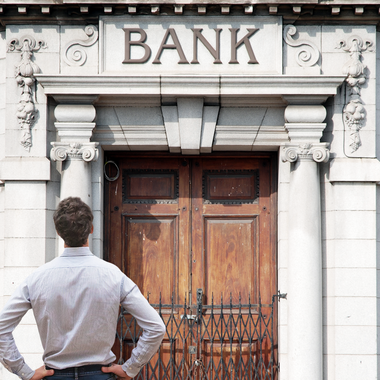Integrating cash into digital financial services
Mar 11, 2020The growth of digital only banks such as Monzo, Starling Bank, and N26 as legitimate challengers to high street incumbents is one example of traditional financial services becoming more digitised.

But this trend isn’t limited to banking, although the growth of digital-only banks is one of the most obvious indicators of the shift away from business models where financial services are sold and managed on the high street. Other financial product verticals such as loans, insurance, and money remittances are also being disrupted by digital-only competitors with competitive advantages such as lower customer acquisition costs. And traditional brick-and-mortar financial services providers are responding to this trend by providing digital-only services of their own.
However, while it is true that financial services are become more digitised, the relationship between consumers and cash remains critically important to the global financial ecosystem. For many consumers the privacy and spending control guaranteed by cash payments makes it a more attractive payment method than bank cards of mobile wallets; for other consumers, that are unbanked or underbanked, a reliance on cash is a necessity.
Why digital financial services must reach out to the cash consumer
As the digital financial services sector continues to develop, engaging with consumers that prefer to make transactions with cash will become increasingly important, for several reasons.
- A valuable revenue stream
With such a high percentage of consumers in Europe and across the globe relying on cash, or preferring to protect their financial data by only using cash to make payments, digital financial services that enable these consumers to use cash to engage with their products and services might significantly impact their revenues. As we have discussed in previous articles on the Paysafecash blog, close to 40 million EU citizens do not have a bank account and an even greater number rely on cash for day-to-day spending; by targeting these consumers digital financial services can make a considerable difference to their bottom line.
- A key differentiator
Even among consumers that have access to alternative payment methods to cash, there are consumers that have a strong preference for protecting their financial details online. Offering more payment methods, including those which do not rely on sharing information such as bank card details, is a way for financial services providers to differentiate themselves from their competitors. According to our research offering consumers more ways to pay is an important objective for online businesses; this is equally, if not more true for digital financial services. For consumers that prefer to manage their finances using cash already, incentivising them to switch to digital services for financial products they cannot access without having to abandon cash will be difficult. Those that do facilitate cash in online checkouts will remain.
We already know that cash remains a popular form of payments in the DACH region, but its appeal still extends beyond these countries. While the number of consumers that are unbanked may be falling globally, the volume of cash in circulation continues to increase due to its demand. Even in Sweden, where the decline of cash use has been the most dramatic, the volume of cash in circulation is now increasing for the first time since 2007, an indication that there is a sustained appetite for making transactions with cash.
The ethics of financial inclusion
Enabling the financially excluded to access cheap and extensive financial services has altruistic positives for society, but the benefits extend beyond making people’s live better. For financial services businesses, the impact on revenues should also be a significant consideration.
Financial inclusion has been a key topic on the agenda for governments, regulators, financial services providers, and fintech organisations for a number of years, as much for its societal benefits as for the potential revenue bringing more consumers into the fold would generate. Financial inclusion is a broader challenge than simply enabling more citizens to open a bank account; it is offering all citizens equal access to the broad spectrum of financial products, at the same level of convenience and at the same cost.
This isn’t the case for cash consumers currently. Access to many financial services is restricted, or is only accessible through paying significantly higher fees. By addressing the imbalance in the system, financial services provider would not only increase the potential market size of their products but also bring tangible social benefit to people, communities, and even regions.
Online cash solutions: bridging the gap between digital financial services and the cash consumer
There are eCash solutions in the market to unite cash consumers with digital financial products, such as Paysafecash. Consumers can engage with a financial product online, elect to order a service or make a payment, and then take a barcode to one of 150,000 of convenient payment points to complete the transaction in cash.
For those who cannot, or are unwilling to make an online payment via any other method than cash, the products such as Paysafecash bridge the gap to digital financial services. In a financial landscape where both the reliance on cash and growth of digital financial services appear sustainable, eCash is the most practical solution for satisfying these trends.
